Introduction
How do we know there is a Gut-Brain Connection ?. Because most of the inhabitants of our planet have experienced stress in their life, which could be the way you feel just before going for a job interview, going on a date for the first time, sitting for an exam, driving test etc…so what happens ?..you get butterflies in your stomach, and the adrenaline rush raises your temperature and you sweat a little, and your become a little anxious.
Fear and love are such emotions that are regulated within the limbic system in the brain located in the temporal lobe, specifically the Amygdala as shown below:
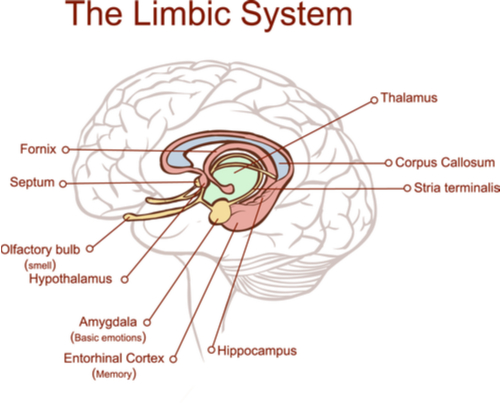
Emotions triggered within the Amygdala activate nerves within the largest cranial nerve in the body called the Vagus nerves which connects the brain vai the brainstem and vital organs to the bowel.
The number of motor nerve fibres that connect the brain and spinal chord to the gut, and within the vagus nerve there are some 2 thousand Preganglionic ( a ganglion is a cluster of nerve fibres that are neurons made up of the cell body (soma) and the connecting fibres (dendrites) to other neurons) which is an incredible small amount.
In contrast there are 100 million nerve cells in the small intestine, which make up the Enteric nerve system including the bowel.
The enteric nerve system is mesh like nerve structure that governs the function of the gastrointestinal tract.
John Langley (1852-1925), a British Cambridge Physiologist is famous for his groundbreaking work on documenting the autonomic nervous system and its published works in 1921,which most are aware of consisting of the sympathetic and parasympathetic branches, but he also included a third division called the Enteric nervous system highlighting the fact that it is anatomically and functionally independent of the brain and spinal chord.
The gut and bowel function of the enteric nervous system can still function if brain connectivity is impaired which makes sense since a person who has lost cognitive function, or as medicine used to do to ‘cure’ peptic ulcers by performing a ‘Vagotomy’* ( severing of the vagus nerve), are still able to digest food in the gut and eliminate waste from the bowel; another example of the ingenuity of the human body.
This is why the enteric nervous sytem is know as the ‘Second Brain’.
If we look at the hierachy of the nervous system, the Central nervous system(CNS) consists of the Brain and spinal chord that issues the orders, and the Peripheral nervous system (PNS) consisting of the somatic nervous system that control voluntary muscle movement and the 3 divisions of the autonomic nervous system that follow them.
A massive nerve feedback system transmits sensory information back to the Master CNS that are monitored and acted upon by the CNS audience.
In summary than the enteric nervous system is not a slave to the CNS but is a contrarion or an independent system within the hierarchical nervous system organization…A Rebel in the words of Michael Gershon ( author of the book ‘the second brain’)>
* To highlight the insanity that encircles some medical science, this criminal procedure is currently being researched as a ‘non invasive’procedure as an option to Gastric bypass procedures for weight loss.
Unfortunately, the vagus nerve is used to stimulate the stomach’s parietal cells that secrete stomach acid and intrinsic factor so permanent low stomach acid which will lead to nutrient malapsorption and pernicious anemia would ensue if the vagus nerve was severed.
The other insane theory is that Parkinson’s disease begins in the GI tract and spreads to the brain via the vagus nerve so you have 2 ‘cures’ for the price of one…Parkinson’s and weight loss…what unscientific tosh….and you want to go for your yearly checkup with these barbarians ??.
VAGUS NERVE DIAGRAM
Why the Second Brain
Why has the gut evolved as a ‘Second Brain’?.
The digestive process involves a high degree of sophisticated chemistry that is necessary to liberate the nutrients we need from what we consume.
The act of swallowing food to the final digestive and absorption functions is governed by a well equipped physiological orchestra and closely regulated by a number of sensors to ensure that the digestive environment works correctly and in a regulated and timely fashion.
This requires a high degree of intelligence and sophistication that can only be afforded by a higher order governing the overall process which requires brain like precision.
If the body was designed that required the central nervous system, i.e the brain as a master control for all of these digestive and absorptive processes, the ‘cable trunk’ required, that would have to connect the brain to the gut would be unacceptably large, and furthermore if it were severed or damaged then the crucial digestive process that maintains our survival would bring about a sticky end to us.
Since not only digestion and absorption would be impaired by bowel elimination would also be impaired.
Therefore the human has been designed to complete this task alongside its own intelligent structure called the ‘Second brain’, independent of the master Brain located in our head.
Why a Vagotomy
As I mentioned above, this barbaric ‘solution’ of severing the Vagus nerve for ulcers was based on the ignorant notion that ulcers were due to excessive stomach acid induced by stress, a so called psychosomatic disorder, so ulcers were caused by some type of anxiety issue.
Another option was to remove the Pyloric Antrum, which is the chemical factory that analyses gastric juice acidity, and by its removbal cripples the feedback mechanism that regulates stomach acid production or they would remove the acid producing part of the stomach as well.
This hypothesis suggested that anxiety preceded the ulcer, which was not the case.
What is an ulcer ?, this is where a hole is blown into the stomach lining compromising the outer mucosal protective lining.
At the time of this hypothesis, pathologists always found bacteria in the hole, but ignored it. Until somebody with some sense B.J Marshall in 1984, said, maybe these ‘little blighters’ are actually behind this mucosal breach ( the ulcer ), identifying them as Helicobacter Pylori (H.Pylori).
H.Pylori is a pathogenic Bacterium that thrives in a neutral PH environment of the mucosal layer, in fact it produces an enzyme Urease that modifys the acidity of its environment making it more alkaline (5-6 PH) which makes the breach more vulnerable to the extreme acidity of the stomach environment, which is typically 1.5-3 ( battery acid), weakening the mucosal wall until it blows a hole in it.
So what causes this ?. H.Pylori resides in everyone as part of the bacterial ecosystem but is always under the control of the Benefical bacteria, but as soon as the gut bacteria becomes dysbiotic this Bacterium can cause trouble.
There is a stress connection, not because nerves are excited within the vagus nerve by some magical force, but because stress can unbalance the gut unleashing this damaging Bacterium.
This means any substance that damages the gut can unleash this pathogen including prescription drugs and eating poisonous refined foods.
Once the gut is dysbiotic, this cause malabsorption, which can also be coupled with low stomach acid.
The solution is to get rid of the stress which you have to do manually, and fix the gut.
From a nervous system perspective, if stress is a factor this will cause a sympathetic dominant state which will inevitably inhibit the parasympathetic branch, shutting down digestion.
So if you receive a diagnosis of an ulcer there are various ways to cure it which include Cabbage Juice, Chlorophyll ( from green leafy vegetables and wheatgrass juice powder), Liquorice and a little known supplement Zinc Carnosine, Yoghurt or Kefir containing Lactosbacillus and Bifodobacteria Caseri which is always contained there. Garlic/Onions and horseradish.
Combine that dietary arsenal and H Pylori will vacate its snug home in your stomach mucosa if it does not die before.
Why is there a gut-brain axis
Although, we have describe the gut as a ‘rebel’ system that can function independently from the master brain in the skull, bidirectional communication between the gut and the brain is absolutely crucial. The master brain receives gut sensations such as fullness after consuming a meal, nausea, discomfort and pleasure which only the master brain can process using hormone/Neurotransmitter based system referred to as Homeostatic energy balance. This complex regulatory system has 2 branches Anorexigenic ( a sub system that controls the cessation of eating), and the Orexigenic ( a sub system that stimulates feeding). Homeostatic energy balance is explained in the article series ‘The Brain has been taken prisoner- Obesity’, and I have recreated a chart from this article series that shows the gut-brain relationship in terms of its compnents sources :
| Neurotransmitter/Hormone | Source |
| alpha-Melanocyte-stimulating hormone (a-MSH) | POMC neuron in the hypothalamus |
| Leptin | Adipose tissue ( Fat cells) |
| Serotonin | The GI Tract |
| Norepinephrine | Adrenal gland |
| Corticotropin-releasing hormone (CRH) | The PVN of the hypothalamus |
| Insulin | Beta cells of the pancreas |
| Cholecystokinin (CCK) | Duodenum cells |
| Glucagon-like peptide (GLP) | Solitary Tract of the brainstem |
| Cocaine- and amphetamine-regulated transcript (CART) | Neuron in the arcuate nucleus, Hypothalamus |
| Peptide YY (PYY) | The small/large intestine |
| Enterostatin | Small intestine |
| Oxyntomodulin/uroguanylin | L cells in ileum & last part of colon |
Decisions that we make in our daily lives are all driven by gut-brain connected feelings.
The neuronal cells in our brain rely on neurotransmitters for neuron to neuron signalling which include Epinephrine (Adrenaline) noepinephrine (Noradrenaline), Dopamine, Serotonin, Melatonin and the precursor amino acids are Phenylaline,Tyrosine and Tryptophan.
In the article series the ’90 essential nutrients’ we describe these 3 amino acids as essential meaning that cannot be synthesized in the body so they need to be part of our dietary intake.
However, our own microbial neighbours actually produce these ‘aromatic’ ( In chemistry substances that contain an aromatic ring are very stable) amino acids via a 7 step metabolic pathway called ‘Shikamate’.
Bacterial species E.Coli, Bacillus, Clostridium, Streptococcus, Enterococcus, Lactococcus, Staphylococcus, Listeria and Desulfitobacterium spp, are all involved with this process.
E.Coli, and other bacterial species residing the colon also produce Vitamins K2,B1,B2,B6,B12 for us.
These amino acids and Vitamins are crucial for so much functionality in the body that the pure intelligent design of the body to maintain our survival is in place as a back-up process in the event of the host experiencing a hostile environment in which food availability is sparse, for example.
The ‘flip’ side of the gut brain connection is that an imbalance in the gut also affects the master brains cognitive functions, since an imbalance promotes an overgrwoth of pathogenic bacteria that release metabolite toxins that cross the protective barrier that is supposed to prevent unwanted substances into the brain which becomes compromised when the bodys physiology becomes out of balance.
This protective barrier is called the ‘Blood Brain Barrier’ and is the subject of discussion in the next section.
What is the Blood-Brain Barrier?
We have covered the first high security ‘checkpoint’ the Epithelial gut barrier, now we need to focus on the super high security ‘checkpoint’ the Blood-Brain Barrier ( BBB).

Diagram 1: The Blood Brain Barrier (BBB)
Diagram 1 depicts a simplified view of the BBB which consists of Central Nervous system endothelial cells that are distributed along the length of the blood capillary, completely encircling the lumen ( area containing the blood).
Along the entire length of the endothelium and in between the endothelial cells are semi-permeable tight junctions ( TJ) that have a similar structure to the TJ of the epithelial cells of the gut barrier.
Supporting the endothelium ( endothelial cells + TJ), located between the outer wall of the blood vessel and the endothelium, is a ‘protein carpet‘ called the Basal Lamina which is a thin basement membrane that is made up of Laminin ( fibrous protein), fibronectin ( a Glycoprotein ), tenascin ( a Glycoprotein), Collagen ( structural protein for connective tissue ) and proteoglycan ( connective tissue protein).
The TJ,and 2 cells Pericytes and Astrocytes seal the capillary. Perivascular cells or Pericytes are contractile cells that wrap around the endothelial cells to assist with angiogenesis ( cell differentiation and multiplication ). Astrocytes envelope 99% of the endothelium to regulate the balance of ions outside of the brain, provide nourishment for the endothelial cells and assist the healing process after injury to the central nervous system. Astrocytes are a special type of Glial cell (cells that surround neurons for insulation purposes).
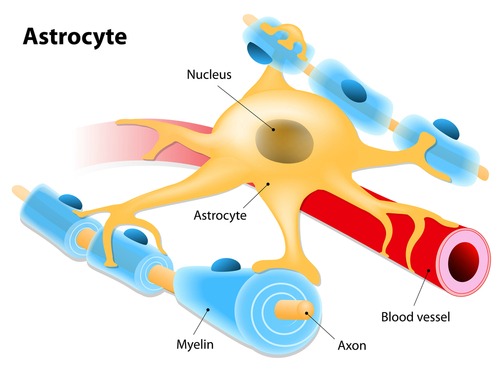
What’s the function of the Blood Brain Barrier?
The function of the BBB is to allow small molecules IN, such as enzyme transportation of nutrients, water, some gases, glucose and amino acids for neural function. It is supposed to keep out toxins and microbial pathogens and poisonous drugs.
Mouse studies suggest that the microbiome modulate the BBB, but that also makes it vulnerable to changes within the microbiome.
This means that if the gut is unbalanced and in a gut dysbiosis state, nasty metabolites like toxic indols from E.Coli, and P-cresol from C.difficile are released into the gut, and cross the BBB.
Furthermore, if the unbalance is extreme enough, folate producing Bifidobacteria and Cobalamin ( for B12) producing Lactobacillus and Bifidobacteria get disrupted.
Bidirectional signaling between the gut and brain is regulated at neural,endocrine and immune levels.
It is also proposed that untreated gut dysbiosis acquired in early life will have a significant effect later in life as evidenced by the many GAPS( Gut and Psychology syndrome ) patients that Dr Natasha Campbell Mcbride treats every day in her practice.
It is also evident that normal development in early life of microbiome colonization is vital for the critical stress signaling pathway the hypothalamic-pituitary-Adrenal axis (HPA).
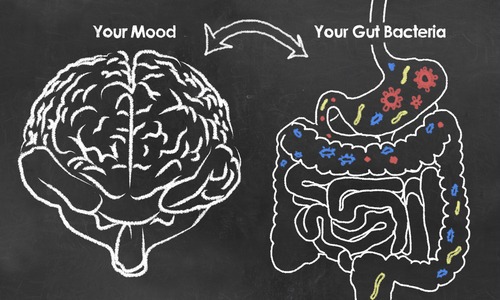
It is also vital that older people who could be subjected to process of ‘Inflammaging’, a low grade inflammatory process, due to changes and less diversity in their microbiome, ensure that their gut flora is kept well nourished.
Stress is another significant factor that can reshape the microbiome, coupled with an increase in gut barrier permeability, and a definite role in barrier dysfunction. Under stress, a hormone is released called CRF ( Corticotropin releasing Factor ) by the hypothalamus to signal the adrenals to release cortisol in response to physiological stress; another inter-activity that affects gut barrier distress.
There are many studies highlighting Gut microbiome shifts in patients suffering from Irritable Bowel syndrome (IBS) such as an altered Firmicutes/Bacteroides ratio as well as psychiatric symptoms such as depression and anxiety, confirming the interactivity of the gut brain axis.
It is of course not surprising that gut microbiota profiling is not included as part of the routine clinical practice.
The fact that Serotonin which is manufactured by our gut flora that targets the Serotonergic pathways in the brain, and a critical signaling molecule for the gut-brain axis should be the CLUE to allopathic physicians what is going on.
Furthermore, the relationship of gut dysbiosis and diet is another CLUE as scientifically explained by David et al 2014, and Sanchez-Villegras et al 2012, confirming that fast food/processed foods are associated with increased intestinal permeability and depression, while vegetables,fruit and fish are associated with low or no risk to increased intestinal permeability and depression.
But this can’t be true, the body is just deficient in the required medication..everybody knows that..Duh.

All you are is a Statistic!
Do you know the song Slavery days by Burning Spear? Here is one line of the verse :
And they beat us (do you remember the days of slav’ry?)
In 1850 during slavery times New Orleans Physician Samuel Cartwright discovered a disorder with Slaves that he called ‘Drapetomania’ (drapetes meaning ‘runaway slave’ and mania..well everybody knew that word) so this ‘disorder was coined and associated with negro slaves that wanted to be free… (Ingrates, how dare they, they must be sick..doesn’t everybody want to be shackled and worked to death).
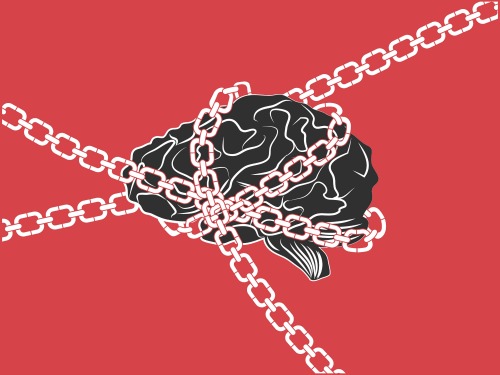
Psychological disorders including behavioural problems,depression, Schizophrenia, Dyspraxia, Dyslexia, Attention Deficit Disorder ( ADD),Autism, whichhave reached epidemic proportions, following a similar trend to physiological disorders that we mentioned in the previous article on the ‘Microbiome and disease’.
Psychiatry possesses a Psychiatric ‘Bible’ called the DSM ( Diagnostic and Statistical Manual of mental disorder ) which is a compendium of mental illnesses financed and published by the American Psychiatric Association (APA).
The DSM has gone through several iterations overs the years adding more disorders. In 1952 the DSM I listed 106 disorders and in 2000 the list of psychiatric disorders had grown to 300 spread over the 1000 pages in DSM IV. I am to understand that complete with all sub categories of disorders there are some 600 listed in the latest edition DSM 5.
In 1973, from external pressure from various activist groups homosexuality as a psychiatric disorder was removed from the DSM
Interestingly there exists an opinion that homosexuality is driven physiologically from the medial preoptic area/anterior hypothalamus, a small 300 gene organ that control sexual preference and if this tiny organ is deficient in cell numbers (e.g less than 250) at birth the child most probably will develop homosexual preferences during his/her puberty years or later. This means that Homosexuality is actually a birth defect, since diminished cell numbers is a consequence of a nutrient deficiency in the mother.
The following table displays a 2014 extract of the number of young children between the ages 0-17 years who are taking psychotropic drugs to treat Attention deficit disorders, Depression, anxiety, etc conditions:
| Drugs | Age 0-5 years | Age 0-17 years | Accumulative Number |
| All Psychiatric drugs | 1 million | 8.3 million | 8.3 million |
| ADHD | 188000 | 4.4 million | 12.7 million |
| Anti-depressant | 110000 | 2.1 million | 14.8 million |
| Anti-Psychotic | 27000 | 830000 | 15.6 million |
| Anti-anxiety | 720000 | 2..1 million | 17.7 million |
In 2014 1 out of 13 American children were taking medication for emotional or behavioral problems. Currently 7.5% of American children between the ages 6-17 years are now taking psychiatric medication. Some 17 million children in the western world ( 10 million of which reside in the US) are prescribed some form of psychotropic drug.
From the table above children 5 years older and younger are the fastest growing segment targeted by Psychiatry and the pharmaceutical industry. Children as young as 4 years have attempted suicide and 5 year olds have committed suicide while under the influence of these drugs.
Between 1995 and 1999, Antidepressant use increased 580% for under 6 year olds and 151% in the 7-12 age range.
In Australia stimulant prescription rate for children has increased 34 fold in the last 20 years.
In Mexico sales of Ritalin ( mind control drug used to treat ADD/ADHD) increased 800% between 1993 and 2001.
In the UK, stimulant prescription rate for children increase 9,200% between 1992 and 2000 ( Statistics provided by ‘Fightforkids’ website).
In the UK 57 million prescriptions were issued in 2014 for anti-depressants, which is enough to give to every man woman and child living there.
In 2013, 25 years after Prozac ( another mind control drug used to treat ADD/ADHD) was introduced, and now more than 20% of Americans take Prozac and other types of Psychotropic drugs regularly which amounts to 60 million people.

What is Happening?
Has the human race been replaced with Zombies? Why are so many people out there being talked into taking these drugs?
Our emotions, our decisions, all thought and reasoning is performed by our brain but its normal functioning is influenced in part by the functioning of our Microbiome and our nutritional status.
Why is society allowing themselves to be lead into this world of Madness and ignorance?
We should be thankful that organizations like the Alliance for Human Research Protection document impropriety within medicine and related fields.
On their website currently, you can find the scandal that surrounded a Harvard Psychiatrist Joseph Biederman who supposedly advanced the notion of Childhood Bipolar Disorder while accepting research funds from the manufacturer of the prescribed medication Johnson & Johnson. As they state on their website :
….’Because overmedicating kids is a symptom of modern parenting’…
…to prescribe antipsychotic medications as an antidote to normal childhood behavior.’…
…’It used to be that children once had discipline; they now have a diagnosis’…
Gary Greenburg a Psychotherapist published his ground breaking book in 2013 called ‘The book of Woe- The DSM and the unmaking of psychiatry.’
In his book he refers to the DSM as the book of woe. He writes ‘DSM 5 encourages practitioners to diagnose more illness and prescribe more therapies using medications whose efficacies are unknown with severe side effects.
He asks ‘What is Attenuated Psychosis Symptom Disorder?’ and he states that the ‘Book of woe’ is a mad chronicle of so called madness.
This sounds a bit like Allopaths prescribing Aluminium laced antacids for GERD ( Gastroesophageal reflux disease)
Many diseases that plague humans today have been eradicated by Veterinary medicine. Maybe if we visit a horse doctor they would tell us correctly that GERD is caused by the absence of stomach acid, not too much acid.
Joel Wallach, renowned doctor of Veterinary medicine, Pathologist, and Naturopath doctor, who has performed 17,500 autopsies on 454 species of animal and more than 4,700 human autopsies ( including 1700 children under 10 years of age).
He writes in his book on Epigenetics so eloquently how in November 1977 while performing an autopsy on a Rhesus monkey discovered it had Cystic Fibrosis (CF), which was confirmed soon after by leading CF experts of the time including Dr Victor Nasar of Emory University, and Dr E.H Oppenheimer the world’s expert at John Hopkins.
They all agreed that this was the first case of CF found in a non-human primate and they were astonished.
The NIH were extremely interested in this discovery and wanted Wallach to speak at a future conference.
Joel Wallach had found the cause of Cystic Fibrosis and he could even recreate it in other monkeys; it was a Selenium deficiency and his first thoughts were, I can help thousands of human children suffering with this illness.
When Wallach’s boss returned from a 2 week vacation instead of applauding Wallach for his magnificent discovery he fired him saying:
“You can’t go around saying that CF is a nutrient deficiency disease, the whole world knows it is genetic.”
Wallach replied “It is what it is, the Truth.”
To which the reply came back, ”The truth is irrelevant.”
So I ask the question again ‘What is happening?’…is everyone in the medical profession going to continue to walk around with their fingers in their ears saying “ I’m not listening..I don’t want to hear it”, it’s Blasphemy.
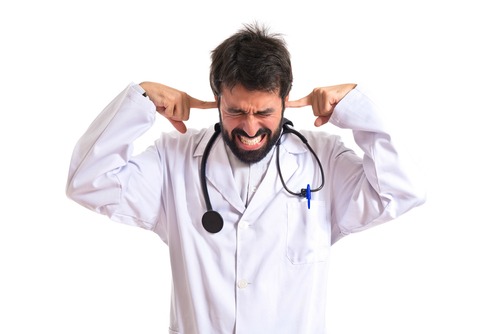
Nearer the truth..even if it does hurt
Most psychiatric patients have digestive disorders, where 99% of all cognitive disorders start in the gut, so why are they being treated with Psychotropic drugs?.
We mentioned in the Microbiome and disease Part 1 that toxic by-products (Peptides) secreted by the overgrowth of commensal bacteria mimic opiate effects like morphine and heroin which seriously affect cognitive function.
Natasha Campbell-Mcbride confirms that these substances are all found in the urine of patients suffering from Schizophrenia, Autism, ADHD, Postpartum Psychosis (this is a severe mental illness occurrence which can erupt within days or weeks after a woman gives birth, and is recognised by variable and rapid bouts of high mood, depression, confusion, hallucinations and delusion, epilepsy, down’s syndrome, depression and some autoimmune conditions.
The cause is without doubt maldigestion, and these undigested proteins that breach the epithelial gut barrier, get absorbed in the blood, breaching the BBB and enter the brain. Again we find that our wonderful Enterocytes have the ability to break these peptides down by releasing a special enzyme Dipeptidyl peptidase IV ( DPP IV), but patients suffering from these psychotic type conditions are deficient in these enzymes because the enterocytes are damaged from the previous bacterial/toxin siege.
We are informed by Dr Campbell-Mcbride that Schizophrenia, and the anti-psychotic drugs that are prescribed for it, have 15-25% success rate of reducing symptoms.
When we consult old text, we discover that psychiatrists of the day confirm the links between malnourishment and psychotic disorders like Schizophrenia.
The 1932 publication of the Textbook of psychiatry ( Henderson & Gillespie) insists that Schizophrenics are poorly nourished, and French psychiatrist Phillipe Pinel said that “the primary seat of insanity generally is in the region of the stomach and the intestines”.
In 1986 William Eaton head of the institute of mental health at Johns Hopkins received a letter from a Curtis Dohan a Philadelphia internist who specialized in celiac disease, confirmed that adjusting a patients diet ( to exclude wheat ) had a curative effect and indeed it appeared to work for his schizophrenic patients as well.
Abram Hoffer, up to his death in 2009, was administering megavitamin treatments for schizophrenics, a practice that was never accepted by conventional psychiatry (why would they accept it..this is out and out quackery..but how was it that Hoffers patients were recovering ?)
Dr Natasha Campbell-Mcbride is certainly a person that I admire, curing children and families of these psychotic disorders by her personally developed GAPS diet that restores the health of the gut. She does state, however, that most have to make lifetime, lifestyle, adjustments to avoid a recurrence of their disorder.
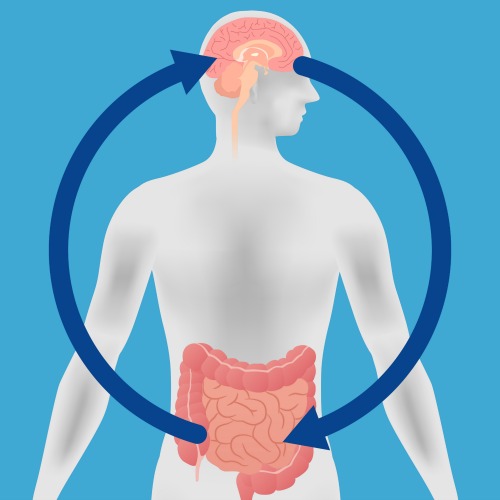
BBB connection with our microbiome confirmed
As discovered in mice research this crucial link between our microbiome and the brain is bi-directional, insofar as the brain influences the ongoing development of our microbial colonies, while our microbial colonies manufacture neuroactive substances that include neurotransmitters ( serotonin ) and metabolites that influence the brain.
Our microbiome use the Vagus nerve ( this is the longest cranial nerve that connects the medulla oblongata just under the brain to the large intestine, the colon ) to communicate with the brain, while the metabolites excreted from our microbes influence the host immune system which maintains its own independent connection to the brain.
We already know Serotonin (5-Hydroxytryptamine (5HT)) is manufactured in the gut by Bacterial species Lactobacillus and Bifidobacteria while Enterochromaffin cells (EC), that are found in the colon pick up a reserve of 5HT.
This reserve is transported to the mucosa, lumen and circulating blood platelets and in fact to 14 different 5HT receptor sites.
5HT provides signaling stimulus to a cell found in the GI tract called the Interstitial ( space between structures of objects ) cell of Cajal ( named after Santiago Cajal, a Spanish pathologist), (ICC) that work as an electrical pacemaker generating electrical slow waves to the smooth muscle making Peristalsis possible.
The wave frequencies that occur in the GI Tract are:
- Stomach – 3/minute
- Duodenum – 11-12/minute
- Ileum – 9-10/minute
- Colon – 3-4/minute
5HT that is injected into the blood maintains hemostasis control ( Blood clotting), vasodilation ( blood vessel dilation lowering blood pressure regulated by the Autonomic nervous system Sympathetic branch throughout the body), pain and nausea perception, and influences bone development.
Interestingly, 5HT influences intestinal integrity, since epithelial cells secrete SERT (Serotonin selective Reuptake Transporter) which is also responsible for uptake in the brain.
It also has been discovered that approx 2% of the neurons in the myenteric plexus( the major nerve supply to the GI Tract ) is serotonergic, where SERT acts like a sponge removing the 5HT from the interstitial cells and soaking the epithelial cells.
Lower serotonin levels are detected when inflammatory conditions like Crohn’s disease ( autoimmune disease where the immune system attacks the GI Tract), and Ulcerative colitis ( autoimmune disease where the immune system attacks the colon ); both conditions are referred to as Irritable bowel syndromes.
I must make a note here, the term Nosology refers to disease classification, and within this process some disease labels contain the word syndrome ( this means ‘We have no idea what this is’, which is like the person who named the insect ‘fly’…’what should we call it…hm..I dont know..whats it doing..hm..well..hm.. lets call it a fly..I mean we don’t call fish ‘swims’ do we?).
It is known that 5HT is synthesized by the interplay between enterochromaffin cells (EC), the mucosal mast cells, myenteric neurons and 2 different Isoenzymes ( Isozymes or a multiple enzyme complex ) of Tryptophan Hydroxylase ( TPH) that mediate neuronal activity but how it is accomplished is unknown.
There may be an evolutionary reason as well as a biological reason for this inter-communication between gut microbes and the brain, which John Cryan, a neuroscientist at the University of Cork in Ireland hypothesized, in that humans must remain social creatures in order to procreate.
His experiments show that the gnotobiotic ( germ free mice ) fail to interact with other mice, and since their immune system and brains are underdeveloped, they do not have the same inhibitory characteristics as normal mice with gut flora so they are hyperactive and daring.
In Japan, 10 years ago mice were restrained in a narrow tube for an a hour, after which their stress hormone levels were measured and found to be higher than normal because of the absence of a gut flora. As soon as one microbial species was added to the gut (Bifidobacterium infantis) stress hormone levels returned to normal. So our microbiome also regulates the secretion of stress hormones, notably these hormones are released by the hypothalamic-pituitary-adrenal axis, i.e the Gut-brain connection.
Microbiologist Premsyl Bercik and Gastroenterologist Stephen Collins both at McMaster University Ontario Canada confirmed that by colonising a germ free mouse with the bacteria from another mouse the recipient inherits the donor’s personality. This is indeed proof of how powerful this gut-brain connection really is, and Psychiatrists want to drug these so-called ‘brain disorders’..it defies reasonable logic.
Furthermore, they were also able to recreate Irritable bowel syndrome in mice by the same transplantation process, inducing in the recipient,constipation, diarrhea, pain and low-grade inflammation. The mice also developed leaky intestines, an activated immune system and the production of proinflammatory metabolites that caused many known nervous system effects including anxious behavior.
Did you know that dementia and Alzheimer’s is now the 6th leading cause of death?
5 million Americans suffer from dementia type disorders killing one in 3 senior citizens.

Bob Wiley: Excuse me, Phil, but with these particular symptoms, is Prozac the right choice?
Lily Marvin: You think Prozac is a mistake?
Bob Wiley: Well, with this kind of manic episode, I would think Librium might be a more effective management tool.
Phil: You could be right. I’ll rewrite the prescription.
Bob Wiley: [speaking to workers in a mental hospital] It reminds me of my favorite poem, which is, “Roses are red, violets are blue, I’m a schizophrenic… and so am I!”
Quotes from the movie ‘What about Bob’
Check out the Previous Article in this series:
Microbiome and the Immune system
References/Acknowledgments :
- Fightforkids Website article
- CCHR Interaction website article
- The Book of Woe – The DSM and the unmaking of Psychiatry ( 2013 Book) Gary Greenburg
- Gut and Psychology syndrome ( 2015 Book) Dr Natasha Campbell-Mcbride
- The second Brain Book 2003 Michael Gershon
- The Mind-Gut Connection Book 2016 Emeran Mayer MD
- Epigenetics ( the death of genetic theory of disease transmission ) ( 2014 Book) Joel Wallach, Ma Lan, Gerhard Schrauzer
- Gut microbes important for serotonin production ( Medical News Today article 2015 ) Catherine Paddock
- Serotonin signaling the GI Tract ( NCBI article 2013) Gary Mawe, Jill Hoffman
- Indigenous bacteria from the gut microbiota regulate host serotonin biosythesis (NCBI article 2015) J.Yano, K, Yu, G.Donaldson, G.Shostri, P.Ann, L.Ma, C.Nagler, R.Ismagilov.S.Mazmanian,E.Hsiao
- Mental Health may depend on creatures in your gut (article 2015) Charles Schmidt
- Breaking down the barriers: the gut microbiome,intestinal permeability and stress related psychiatric disorders ( NCBI 2015) J.Kelley, P.Kennedy, J.Cryan, T.Dinan, G.Clarke, N.Hyland
- You & your Hormones ( Society for endocrinology) website CRF ( Jan 2017)
Author: Eric Malouin
Reviewed by Dr. John Bergman D.C.